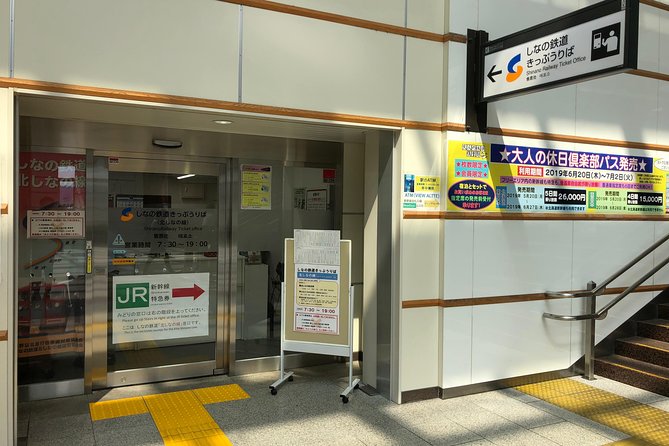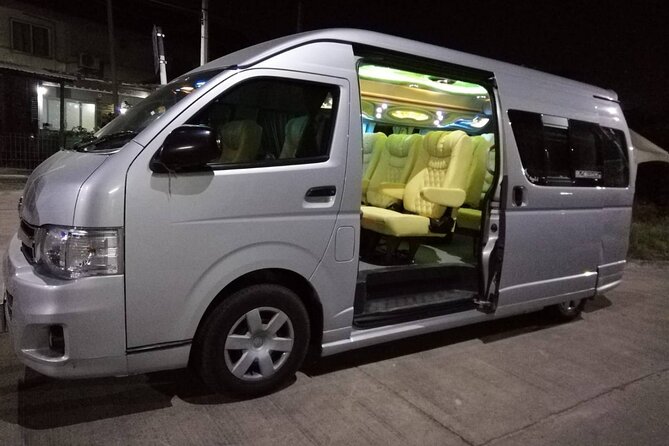Like a window into the past, Japanese traditional costumes transport us to a realm of elegance and grace. The exquisite kimono, the enchanting yukata, and the mesmerizing ryuso all hold a place of significance in the rich tapestry of Japanese culture. But there is more to these garments than meets the eye.
In a captivating photography course, one can learn to capture the essence and beauty of these costumes, immortalizing their allure. And to truly complete the traditional look, a hair set and point makeup add an extra touch of elegance.
Step into the world of Japanese tradition and prepare to be mesmerized.
Quick Takeaways
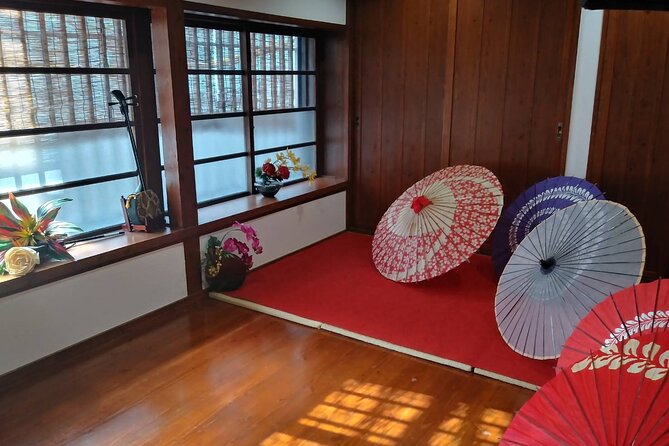
- Kimono is a symbol of tradition, status, and identity in Japanese culture.
- Different types of kimono, such as Furisode and Tomesode, have specific meanings and are worn during different occasions.
- Yukata is a casual, lightweight kimono perfect for summer festivals, known for its vibrant patterns and colors.
- Ryuso is a traditional costume from the Ryukyu Kingdom, representing Okinawan identity and pride with its vibrant colors and intricate patterns.
History and Significance of Kimono
The history and significance of the kimono can be traced back thousands of years in Japanese culture. The evolution of the kimono reflects the changing trends and influences of different eras. Originally, it was a simple garment made from rectangular pieces of fabric, but over time, it developed into a complex and elegant attire.
The cultural significance of the kimono is immense. It isn’t just a piece of clothing, but a symbol of tradition, status, and identity. The kimono is often worn during special occasions such as weddings, tea ceremonies, and festivals, highlighting its importance in Japanese customs and rituals. Its intricate designs and patterns also showcase the artistry and craftsmanship of Japanese culture.
Today, the kimono continues to be cherished and celebrated as an iconic symbol of Japan.
Different Types of Kimono
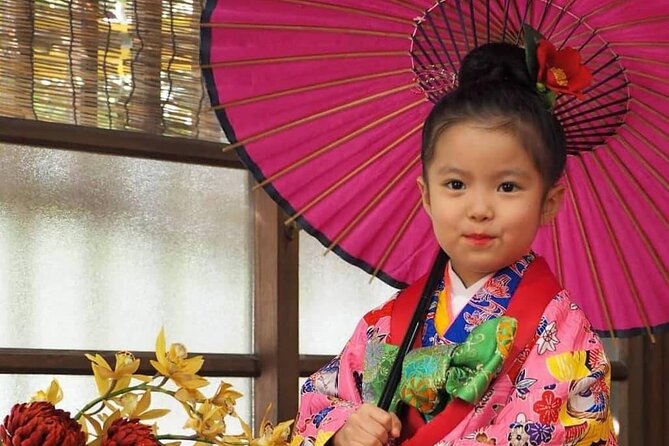
As we explore the history and significance of the kimono, it’s important to understand the different types that have emerged over time. Here are three notable types of kimono:
- Furisode: This type of kimono is characterized by its long, flowing sleeves and vibrant colors. Traditionally worn by unmarried women, furisode is often seen during coming-of-age ceremonies and formal events.
- Tomesode: Tomesode is a more formal type of kimono typically worn by married women. It features shorter sleeves and elegant designs on the lower part of the garment. The patterns on tomesode often reflect the wearer’s social status and occasion.
- Yukata: Unlike the formal furisode and tomesode, yukata is a casual, lightweight kimono usually worn during summer festivals and hot springs visits. It’s made of cotton and features simpler patterns, making it more comfortable for everyday wear.
Understanding the different types of kimono is crucial when styling kimono for various occasions and understanding the cultural significance behind each style.
The Charm of Yukata
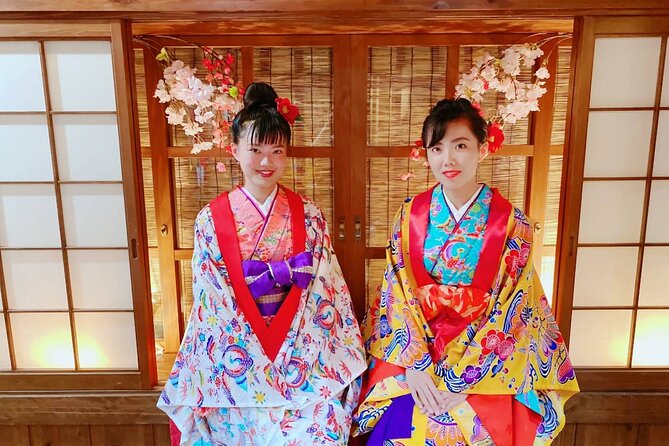
With its lightweight fabric and versatile style, the yukata is a captivating Japanese garment that exudes a charming and effortless elegance. Yukata fashion has become increasingly popular in recent years, not only in Japan but also internationally.
The appeal of the yukata lies in its simplicity and comfort, making it a perfect choice for summer events and festivals. The yukata is typically made of cotton or synthetic materials, ensuring breathability in hot weather. Its loose-fitting silhouette allows for ease of movement, while the vibrant patterns and colors add a touch of fun and playfulness.
Yukata festivals, such as the famous Gion Matsuri in Kyoto, showcase the beauty and cultural significance of this traditional attire. Whether worn casually or for special occasions, the yukata continues to charm people with its timeless appeal.
Exploring the Ryuso Traditional Costume
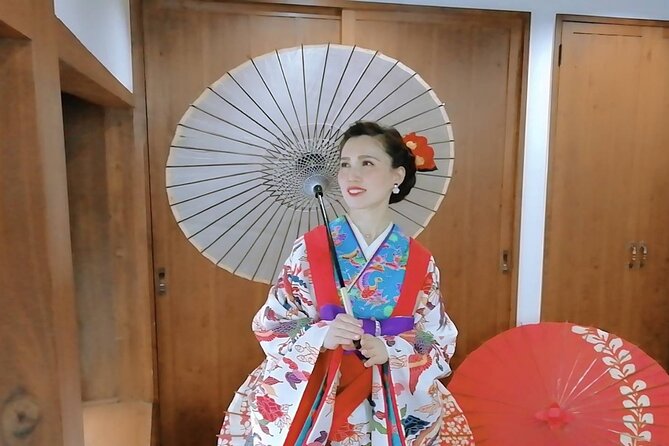
What makes the Ryuso Traditional Costume unique and captivating? The history of Ryuso and its cultural significance contribute to its charm.
Here are three things to know about this traditional costume:
- Rich History: Ryuso originated in the Ryukyu Kingdom, now known as Okinawa, during the 14th century. It was initially worn exclusively by the royal family and aristocrats. Over time, it became a symbol of social status and was worn during special occasions, such as weddings and festivals.
- Intricate Design: The Ryuso costume features vibrant colors and intricate patterns. The fabric used is typically silk, adorned with motifs inspired by nature, mythology, and Okinawan culture. The attention to detail in the design showcases the craftsmanship and artistic expression of the Ryukyu people.
- Cultural Significance: Ryuso embodies the traditional values and cultural heritage of Okinawa. Wearing this costume not only connects individuals to their past but also serves as a visual representation of Okinawan identity and pride.
Photography Course: Capturing the Essence of Japanese Traditional Costumes
The allure of the Ryuso Traditional Costume extends beyond its rich history and intricate design, as it becomes the subject of a captivating Photography Course that aims to capture the essence of Japanese traditional costumes.
This course offers participants the opportunity to learn photography techniques specific to capturing the beauty and cultural significance of traditional costumes.
Through hands-on practice and guidance from experienced instructors, you will develop a deeper understanding of composition, lighting, and storytelling in their photographs.
By seeing the world of Japanese traditional costumes, participants not only learn valuable photography skills but also contribute to the cultural preservation of these iconic garments.
Through their photographs, they can showcase the intricate details and timeless beauty of Japanese traditional costumes, ensuring that their essence is captured and shared with the world.
Hair Set: Adding Elegance to Your Kimono Experience
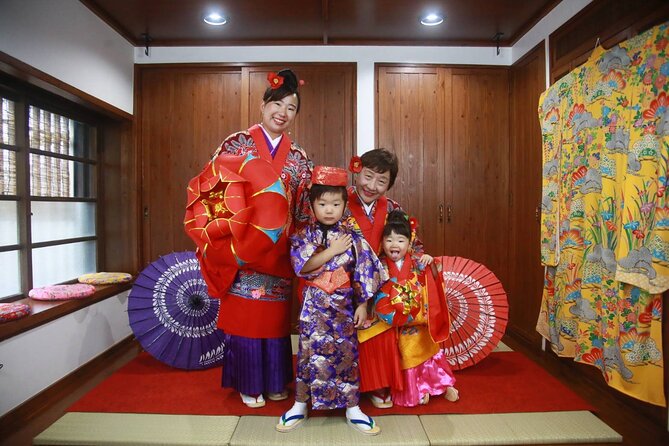
Enhance your kimono experience with an elegant hair set. Adding a carefully styled hairdo can elevate your overall look and bring out the beauty of the traditional costume.
Here are three hairstyling techniques and traditional accessories that can complete your kimono experience:
- Traditional Updo: Opt for a classic updo hairstyle that complements the graceful lines of the kimono. This hairstyle often involves intricate twists, braids, and the use of decorative hairpins.
- Ornamental Hair Accessories: Enhance your hair set with traditional accessories like kanzashi (ornamental hairpins), which come in various shapes and designs. These accessories not only add a touch of elegance but also hold the hairstyle in place.
- Decorative Combs: Consider using decorative combs made from materials such as tortoiseshell or lacquer. These combs aren’t only functional but also serve as beautiful adornments for your hair.
Point Makeup: Enhancing Your Traditional Costume Look
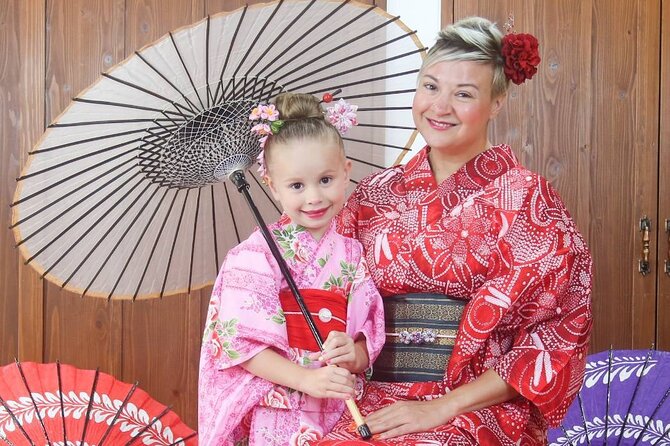
To enhance the overall look of your traditional costume, consider incorporating point makeup techniques for a more polished and authentic appearance.
Point makeup refers to the application of makeup in specific areas to highlight certain features and create a focal point. When it comes to traditional costumes like the kimono or yukata, point makeup can be used to accentuate the natural beauty of the face and complement the traditional accessories.
Some popular makeup techniques to enhance your traditional costume look include enhancing the eyes with eyeliner and mascara, defining the brows, adding a touch of color to the lips, and using blush to give a subtle glow to the cheeks.
Common questions
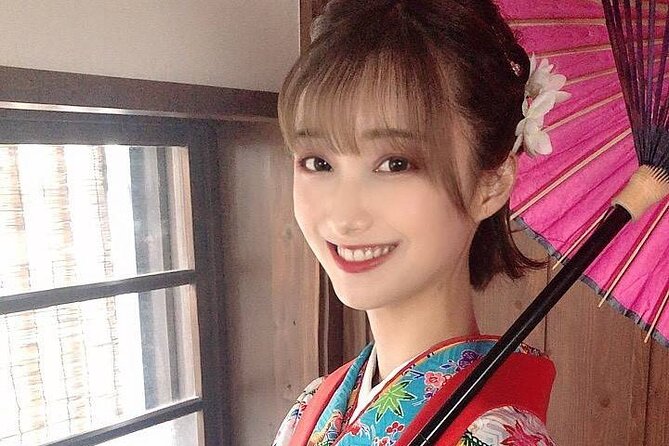
Can I Customize the Design and Colors of My Kimono?
Yes, customers have the option to customize the design and colors of their kimono. They can choose the perfect kimono for different occasions, adding a personal touch to their traditional outfit.
Is There an Age Limit for Participating in the Photography Course?
There is no age limit for participating in the photography course. People of all ages are welcome to join and learn about photography techniques and composition while capturing beautiful moments in traditional costumes.
Are There Any Restrictions on the Types of Footwear That Can Be Worn With a Kimono?
There are no specific restrictions on the types of footwear that can be worn with a kimono. However, there are some differences between the footwear traditionally worn with a kimono and a yukata.
How Long Does It Take to Do a Hair Set for a Kimono Experience?
The hair set for a kimono experience typically takes about 30 minutes to an hour, depending on the complexity of the hairstyle and the hairstyling techniques used.
Is There a Specific Makeup Style That Is Recommended for Traditional Costumes?
There are no specific makeup styles recommended for traditional costumes, but some people choose to incorporate Geisha inspired makeup or traditional makeup techniques to complement their look.
The Sum Up
To sum it up, the world of Japanese traditional costumes offers a captivating glimpse into the rich heritage and beauty of the country. From the iconic kimono to the charming yukata and ryuso, these garments hold a significant place in Japanese culture.
Through the art of photography, one can capture the essence and elegance of these costumes, while a hair set and point makeup complete the traditional look.
Enjoy the enchanting world of Japanese tradition and embrace its elegance and grace.


